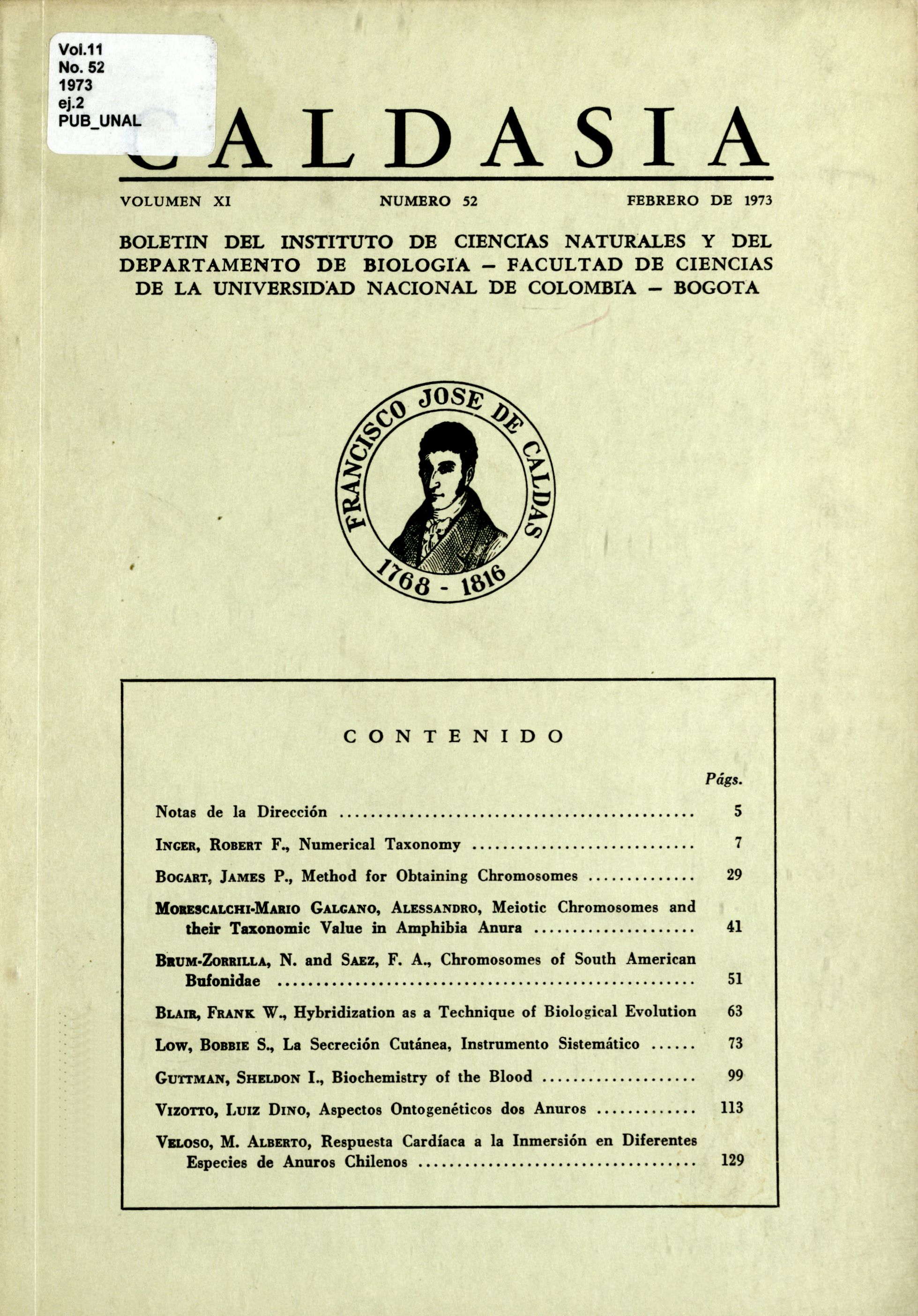Hybridization as a Technique of Biological Evolution
Palabras clave:
Hybridization, Scaphiopus, Armadillidium (en)Hybridization, Scaphiopus, Armadillidium (es)
Descargas
The hybridization of two species represents a method of more importance in obtaining the understanding of the relationships of these species. The crosses in vitro avoid the operation of the mechanisms that are aislated, as the characteristics of the mating call and the size of the body. The results of these crosses provide an indication of the degree of affinity of the species. It is possible, naturally, that a singular gene can
provide an obstacle for the crossing of two species, but the results of numerous crosses indicate that many genes involve themselves in the obstacles of crossing of the two species. Consequently, the results of the crosses permit the reconstruction of the evolutionary history of the groups. No method is of more importance with respect to this type of information than the hybridization method.
provide an obstacle for the crossing of two species, but the results of numerous crosses indicate that many genes involve themselves in the obstacles of crossing of the two species. Consequently, the results of the crosses permit the reconstruction of the evolutionary history of the groups. No method is of more importance with respect to this type of information than the hybridization method.
Cómo citar
APA
Blair, W. F. (1973). Hybridization as a Technique of Biological Evolution. Caldasia, 11(52), 63–72. https://revistas.unal.edu.co/index.php/cal/article/view/34189
ACM
[1]
Blair, W.F. 1973. Hybridization as a Technique of Biological Evolution. Caldasia. 11, 52 (ene. 1973), 63–72.
ACS
(1)
Blair, W. F. Hybridization as a Technique of Biological Evolution. Caldasia 1973, 11, 63-72.
ABNT
BLAIR, W. F. Hybridization as a Technique of Biological Evolution. Caldasia, [S. l.], v. 11, n. 52, p. 63–72, 1973. Disponível em: https://revistas.unal.edu.co/index.php/cal/article/view/34189. Acesso em: 25 dic. 2025.
Chicago
Blair, W. Frank. 1973. «Hybridization as a Technique of Biological Evolution». Caldasia 11 (52):63-72. https://revistas.unal.edu.co/index.php/cal/article/view/34189.
Harvard
Blair, W. F. (1973) «Hybridization as a Technique of Biological Evolution», Caldasia, 11(52), pp. 63–72. Disponible en: https://revistas.unal.edu.co/index.php/cal/article/view/34189 (Accedido: 25 diciembre 2025).
IEEE
[1]
W. F. Blair, «Hybridization as a Technique of Biological Evolution», Caldasia, vol. 11, n.º 52, pp. 63–72, ene. 1973.
MLA
Blair, W. F. «Hybridization as a Technique of Biological Evolution». Caldasia, vol. 11, n.º 52, enero de 1973, pp. 63-72, https://revistas.unal.edu.co/index.php/cal/article/view/34189.
Turabian
Blair, W. Frank. «Hybridization as a Technique of Biological Evolution». Caldasia 11, no. 52 (enero 1, 1973): 63–72. Accedido diciembre 25, 2025. https://revistas.unal.edu.co/index.php/cal/article/view/34189.
Vancouver
1.
Blair WF. Hybridization as a Technique of Biological Evolution. Caldasia [Internet]. 1 de enero de 1973 [citado 25 de diciembre de 2025];11(52):63-72. Disponible en: https://revistas.unal.edu.co/index.php/cal/article/view/34189
Descargar cita
Visitas a la página del resumen del artículo
250
Descargas
Los datos de descargas todavía no están disponibles.
Licencia
Derechos de autor 1973 Caldasia

Esta obra está bajo una licencia internacional Creative Commons Atribución 4.0.
Aquellos autores/as que tengan publicaciones con esta revista, aceptan los términos siguientes:
- Los autores/as conservarán sus derechos de autor y garantizarán a la revista el derecho de primera publicación de su obra, el cual estará simultáneamente sujeto a la Licencia de reconocimiento de Creative Commons que permite a terceros compartir la obra siempre que se indique su autor y su primera publicación esta revista.
- Los autores/as podrán adoptar otros acuerdos de licencia no exclusiva de distribución de la versión de la obra publicada (p. ej.: depositarla en un archivo telemático institucional o publicarla en un volumen monográfico) siempre que se indique la publicación inicial en esta revista.
- Se permite y recomienda a los autores/as difundir su obra a través de Internet (p. ej.: en archivos telemáticos institucionales o en su página web) antes y durante el proceso de envío, lo cual puede producir intercambios interesantes y aumentar las citas de la obra publicada. (Véase El efecto del acceso abierto).
























